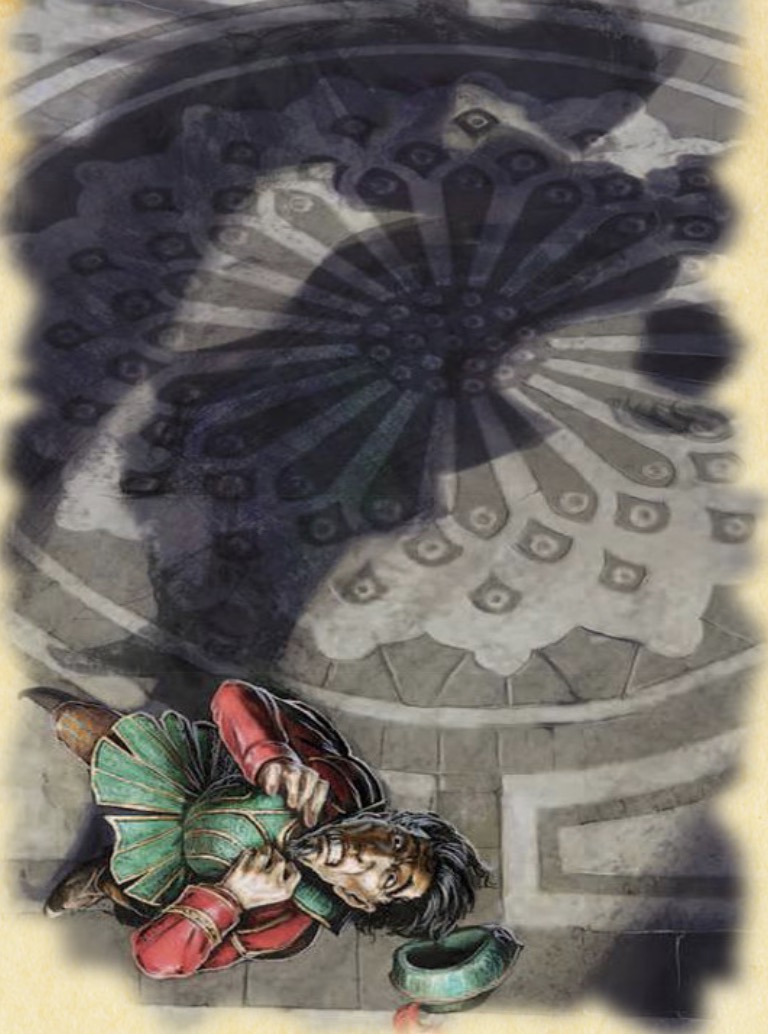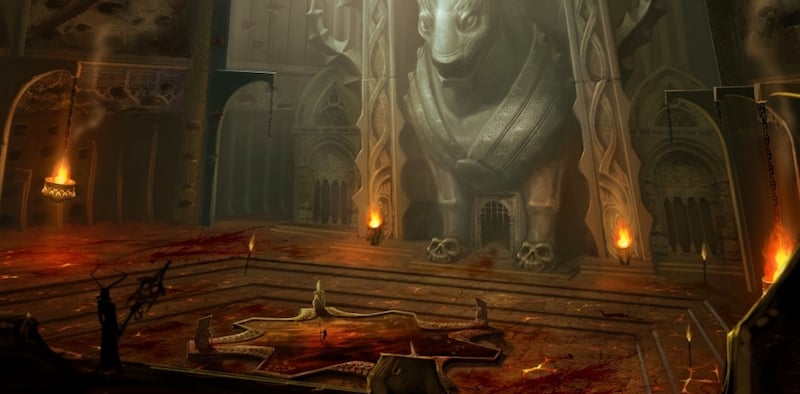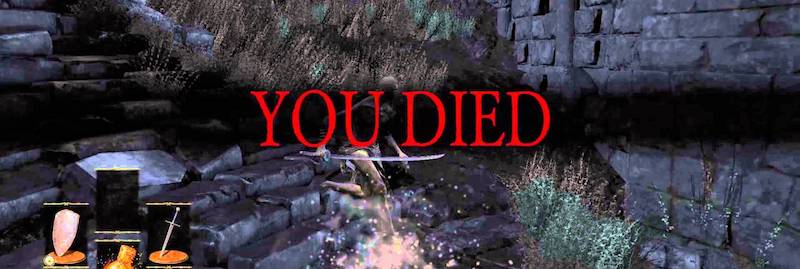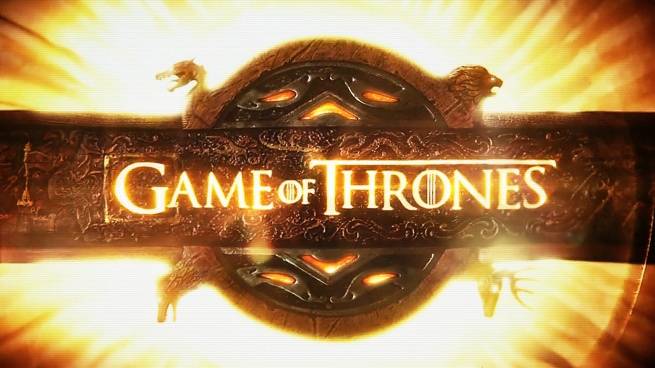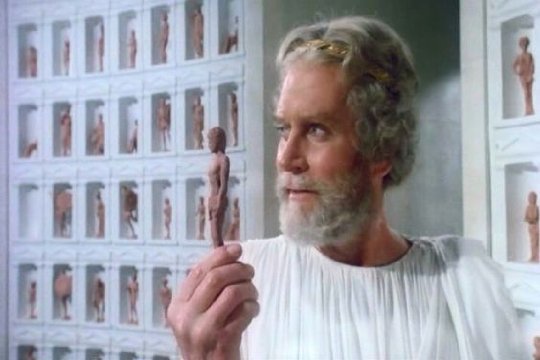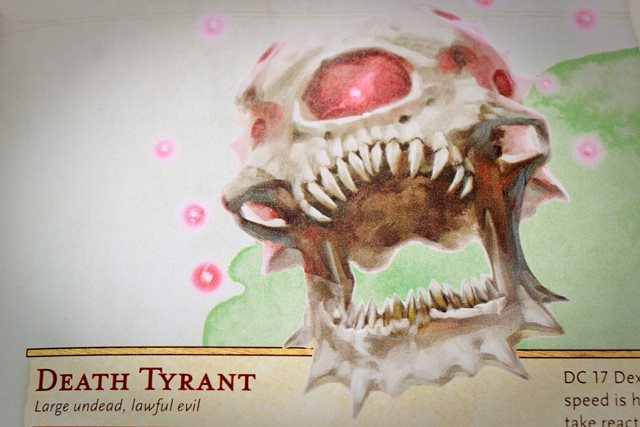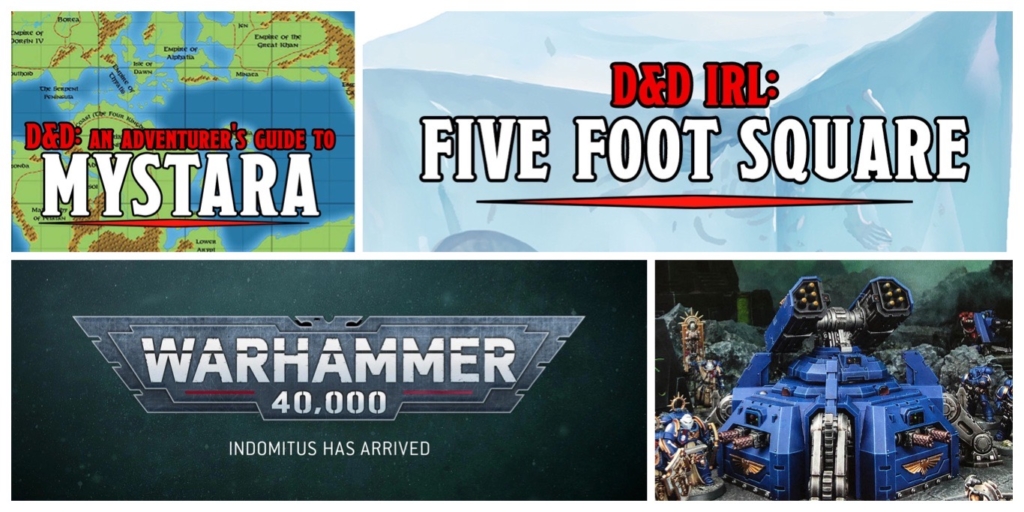D&D: Five Things To Do When The Party Gets TPK’d
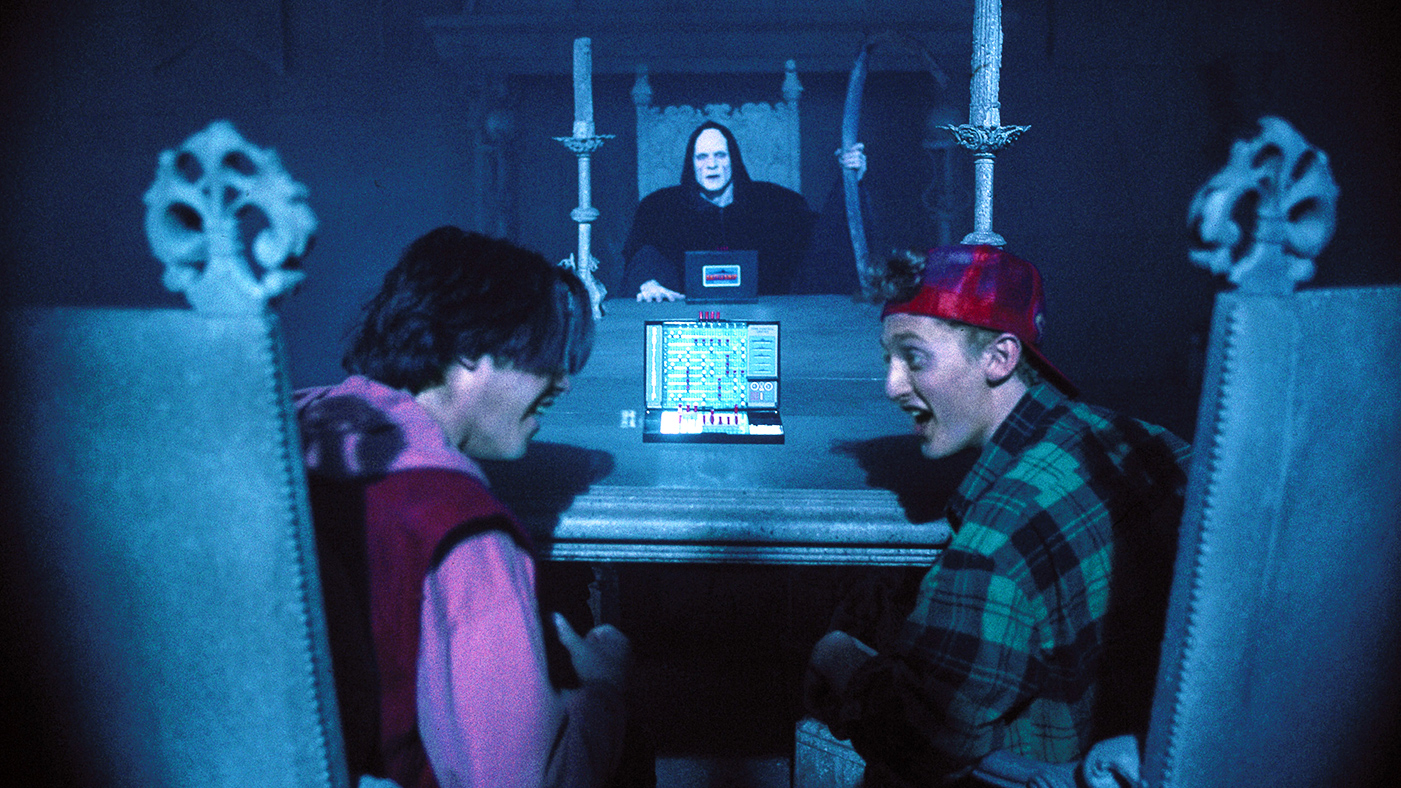
So your whole party has wound up dead–that doesn’t have to mean it’s time to burn all your notes and start over from scratch. Here’s five things you can do to keep things going when everyone’s been ended.
Sooner or later it was bound to happen. Maybe your party has a penchant for blindly attuning to every single magic item they come across, even the cursed ones. Especially the cursed ones. Or perhaps they decide to roll ones on every saving throw. Maybe the party’s battleplan is a note that says “don’t forget to develop a battleplan.” Whatever the reason, you’ve just ended up with a TPK. Everyone’s down–but does that have to mean everyone’s out?
We’ve got five tricks you can use to try and stabilize your campaign before it’s time to head back to the drawing board. Read on friends.
Kick Imprison Them While They’re Down
First things first though, let’s make sure the party is actually dead. I know, I know, you’re all no doubt familiar with the difference between characters being dead and merely just dying, but sometimes it’s easy to write off the party as dead before anything’s said and done. Consider, you’ve got a party of four, and two are already on their last failure, the third went down one round ago, and the ogre just took out your fourth player with a well-timed crit.
Just because the party is down, doesn’t necessarily mean they’re out. The rules for stabilizing a dying opponent are a two-way street. NPCs/enemies can stabilize a dying player just as easily as your PCs. You don’t even have to tell your players that’s what they’re doing if you’re worried they’ll think you’re soft-balling them. Just make a few checks without saying why, and then figure out why the players might be saved after being defeated.
This is a great time to have them taken prisoner–being stabilized doesn’t make you conscious again. It’s the perfect time to have the villains tie up the PCs and start dragging them off. It’s a pretty easy transition from, “and down you go…” to “you wake up in a cold, dank dungeon, chained to the wall…”
Does that have skulls for feet? I think I’d rather be dead now please…
I’ve mentioned before about how being able to have failure that doesn’t end the game can really heighten the stakes and immersion in your game. This is a prime example. Your players will learn that it can be okay to lose a fight–their characters aren’t gone. Not in the best state, perhaps, but not gone.
And boom, just like that, you’ve got the next adventure planned, as your players either work out how to escape from their predicament, and why they were spared in the first place. If you really want to ham it up, have them come to in the middle of a weird cult ritual, and then move immediately into a fight–the stakes are still just as high, and if the players win it’s all the sweeter.
Why Yes, I *Have* Played God Of War
But all I did was stand on the stairs…why game…whyyyyyyy
Fair enough. Sometimes there’s no avoiding it. Your luck runs out in a number of ways and a character (or indeed, the whole party) dies and it’s random. There’s nothing dramatic or meaningful about the loss, it’s just very sudden and seemingly out of your control. And while this may jive with the way the world works sometimes (man, that got dark fast), you’re there playing a game to get away from that.
If I wanted random character deaths, and sad reminders of my all too fragile existence, I’d turn on HBO Go.
Now obviously this is where spells like resurrection and the like come in–but say your party doesn’t have access to these things. What can you do? Especially if it’s not just one character, but the whole party that ends up dead.
Well, you can take advantage of the fact that you’re in a magical world where there’s all manner of things that happen in the afterlife. After all, there are a number of stories about heroes fighting their way back from the underworld. You can use this as an opportunity to play up the mythology of your campaign.
Maybe this is a chance to dig through all the extraplanar monsters in the manual and throw together a few encounters that represent them wandering the plains of Limbo. They could go on a bogus journey, pursued by monsters, as they try and find their way back to the land of the living. If you really want to play up the consequences of their death, let them watch what’s happening in the world while their spirits are hanging out like a bunch of Class V Free-Roaming Vapors.
Divine Intervention
Speaking of mythology though–odds are good their are gods in the world you’re playing with. Or other powerful creatures who are just as capable of bringing the dead back to life. While wandering the planes of limbo, their souls could end up coming across a beatific avatar of a god, bound by archaic rules that forbid them from directly intervening in the world, but now that the players are dead, they can sort of skirt a gray area of the rules for the games of divinity.
Or maybe there’s something darker that binds their souls and breathes life back into them, but at a hidden cost the players did not consent to. Like a certain Raven Queen–or any of the other gods of Death. The point is you can use the death of the players as an opportunity to further your story by adding an unexpected twist.
I’m not saying bring the characters back just for the sake of continuing the campaign, but rather, take some time to find a purpose within the story you’re telling to bring them back. When a player dies there should be consequences, but the loss of a character isn’t the only possibility. Having an obligation or geas to fulfill could make things interesting when the party’s mission comes into conflict with it.
We’ve been geased to be excellent to each other…
Or if they’ve learned some terrible fate about to befall the world, you could have every excuse you need to get the next part of your campaign kicking. When done right, it’s a little like a magic trick–you are juggling things behind the scenes, and maybe you didn’t plan for everyone to die–but having a little bit of a framework there at the back of your mind can make your follow-up seem planned.
Un-doing things?
There’s also another alternative. One that requires a little more rules juggling and tweaks to the characters, but you could always have the players rise as undead. There are, after all, a number of monsters out there that turn creatures into different types of undead. There’s nothing that says your players have to lose all their character traits just because they’re undead.
Did your paladin die in a death tyrant’s negative energy cone? Well, take a look at the zombie, make a few adjustments to the character’s stats (this is where it gets tricky. You don’t want to screw them over, but also you want to still play up that they’re undead now), figure out if you want them to still be able to cast spells or not, then write the word “Zombie” in front of whatever they have written under race on their character sheet, and you’re good to go.
I think one of the best things about the collaborative storytelling aspect of roleplaying is discovering all the little moments that come from unintended outcomes. Your paladin might never have expected to be a zombie–but now they have a ton of questions, what does it mean to be undead and a paladin, can they still serve their god, what happens if they try to turn the undead? How can you undo what has been done?
Once you’ve got players asking questions like this, you’ve got them immersed in the game. Then your next few sessions might write themselves.
Burying the lede
Of course, sometimes it’s okay for characters to be dead too. Pull any of these options too much and you risk turning your campaign into a comic book, soap opera, or comic book soap opera (not sure if that’s a comic book about a soap opera, or a soap opera featuring comic book characters, either way, you get the idea).
So if the players all die–take a little time ,figure out if you want to advance the plotline a little–or maybe you flash back and introduce a new party that’s been adventuring elsewhere in the world while the heroes were doing whatever and now they have to deal with the consequences of the original party’s defeat. It can be nice to see touches of the legacy of that first batch of characters still affecting the world, making it unique–even giving them a little ownership of the world, and by extension the game you’re all playing together.
Anyway, these are just a few things you can keep in mind the next time things start to go poorly at the table. It might take a little bit of work on your end, but these can be great ways to keep things from skidding to a stop–and can even add something to your campaign.
Got a TPK story, as either player or gm? How was it handled? Let us know in the comments!

